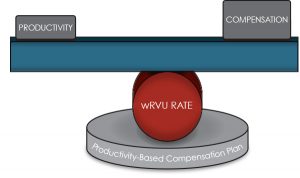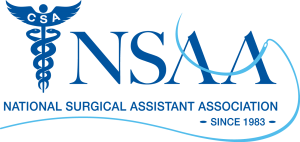 The US is facing a shortage of physicians, and that shortage is growing. Fortunately, hospitals and other healthcare facilities are turning to non-physician providers to help offset that need.
The US is facing a shortage of physicians, and that shortage is growing. Fortunately, hospitals and other healthcare facilities are turning to non-physician providers to help offset that need.
The performance of certain complicated procedures often requires technical expertise on the part of both surgeon and the surgical assistant. Having properly certified assistants at surgery usually makes the operation go faster, safer and smoothly.
Having expert assistance can translate into shortening the time needed for anesthesia, increasing the safety of the procedure, reducing the surgical complication rates, and thus decreasing operating room costs. Any policy or guideline that eliminates the proper utilization for non-physician surgical assistants directly affects quality of surgical care and could jeopardize the lives of surgical patients directly and indirectly.
Before we go any further, it is worth making a clarification that there is a distinction in role and scope of practice between a surgical technologist and a surgical assistant. (https://siccode.com/soc-code/29-9093/surgical-assistants).
The non-physician providers that we are referencing in this article are certified surgical assistants (CSA), certified surgical first assistants (CSFA), registered nurse first assistants (RNFA), physician assistants (PA-C) and advanced practice nurses (APN).
The American College of Surgeons has listed all surgical procedures in three categories: a) Never, b) Sometimes and c) Always; referring to the need to utilize an assistant at surgery based on the complexity and type of surgery. Taking this list as reference; more than 60% of the surgical procedures might require the need for an extra set of qualified help to the surgeon.
We took to the task of attempting to provide an objective data-based justification by comparing two datasets that are known and documented which is the time variable that it takes to perform the top seventeen surgical procedures performed in the US that uses surgical assistants.
SUMMARY OF DATA USED
 Relative Value Units (RVUs) are the basic component of the Resource-Based Relative Value Scale (RBRVS), which is a methodology used by CMS and private payers to determine provider payment.
Relative Value Units (RVUs) are the basic component of the Resource-Based Relative Value Scale (RBRVS), which is a methodology used by CMS and private payers to determine provider payment.
RVUs, do not directly define provider compensation in dollar amounts. Rather, RVUs define the value of a service or procedure relative to all services and procedures. This measure of value is based on the extent of provider work, clinical and nonclinical resources, and expertise required to deliver the healthcare service to patients. RVUs ultimately determines provider compensation when the conversion factor (CF), dollars per RVU, is applied to the total RVU.
Under the RBRVS, payment for services are determined by:
- Total RVUs
- Geographic Practice Cost Indices (GPCIs)
- Conversion Factor (CF)
Some services require a considerable investment of provider time and effort, clinical staff, and specialized equipment. Other services require inappreciable time and resources.
To implement a fee schedule built on the principle that payments for medical procedures and services should reflect the costs of providing them, CMS adopted the RBRVS, which calculates fees for each service and procedure based on a single measure—the relative value unit. Using code descriptors as vignettes, medical codes were assessed and assigned RVUs that ranked the resources used to provide the services on a common scale.
In other words, the RVUs assigned to a procedure or service compares its value relative to other procedures or services. A service with 6 total RVUs means the resources consumed in delivering that service are 6 times greater than those consumed by a procedure with 1 RVU.
Types of RVUs
To accurately capture the consumption of time, effort, and money involved in providing a service to patients, the RBRVS model utilizes three specific components, or types of RVUs, that, when totaled, determine payment. These RVU types measure the following:
- Work RVUsaccount for the provider’s work when performing a procedure or service. Variables factored into this value include technical skills, physical effort, mental effort and judgement, stress related to patient risk, and the amount of time required to perform the service or procedure. Work RVUs account for 50.866% of the total RVU for a code. Work RVUs are composed of 70% time and 30% effort.
- Practice expense (PE) RVUs reflect the cost of clinical and nonclinical labor and expenses of the practice. These include medical supplies, office supplies, clinical and administrative staff, and pro rata costs of building space, utilities, medical equipment, and office equipment. Practice expense RVUs account for 44.839% of the total RVU for a given service.
- Malpractice (MP) RVUs reflect the cost of professional liability insurance based on an estimate of the relative risk associated with each CPT® code. Malpractice RVUs account for 4.295% of a service’s total RVUs.
We identified the top seventeen procedures from a trade association survey that required the times and type of provider to be documented and confirmed for inclusion.
The times considered from both sources were:
- a) CMS: The intra-operative time detailed for each procedure in the RVUs which is defined from the moment the patient is brought in the operating room to the time the patient is taken out to recovery.
- b) Survey: The time from when the patient is brought in to the operating room to the time the patient is taken out to recovery from EMR logs for the time period between October 2015 and April 2016.
A total of 15,228 case were identified and analyzed.
RESULTS

In this situation, there are two sets of data being collected and two averages being compared from different sources. The two averages being compared are the time variables that are accounted in the RVUs of each procedure and the time logged in by the survey respondents’ EHR for the same procedure.

The results will determine if there is a difference between the time used by CMS and the time where a non-physician surgical assistant was documented to be utilized and therefore if the utilization of these type of providers is cost-effective.
The times for CMS and the survey do differ significantly in comparison (Mean 91.65 for CMS and 73.84 for survey results) as indicated by a t-value of 3.544 which is more than the critical t-value of 2.12. Additionally, the p-value is less than 0.05 indicating that there is a statistically significant difference between the CMS and survey times for the same procedures.
DATA ANALYSIS LIMITATIONS
 One very important limitation was that the CMS data does not specify if a surgical assistant was utilized and what provider type was used if there was one in the procedure.
One very important limitation was that the CMS data does not specify if a surgical assistant was utilized and what provider type was used if there was one in the procedure.
On the other hand, the survey data does acknowledge that a certified and properly credentialed non-physician surgical assistant was utilized in all the procedures logged.
Another limitation is that we do not know in what type of facility the CMS data has been taken from; if the survey for these times were from teaching hospitals, then you could assume a cause and effect for the statistical difference due to the fact that the survey data was provided by mostly non-teaching facilities where the ultimate goal is to increase the efficiency in the process and in contrast in teaching facilities; the goal and priority is to train the future generation of surgeons while not focusing on efficiencies in terms of time.
RECOMMENDATIONS
From the data collected and analyzed, the utilization of certified non-physician surgical assistants does create efficiencies in time and costs both directly and indirectly by potentially decreasing surgical complications as widely referenced. (The American Society of General Surgeons, 2021)
Based on the average operating room cost per minute from a 2018 JAMA study of $30-$38 per minute. The potential cost direct savings would be between $8-$10 million dollars for the sampling of 15228 cases.
The indirect benefits and savings are much more difficult to determine accurately as they are associated with decreased anesthesia and surgery times with the resulting reduced complications rates.
REFERENCES
- Case logs from a surgical assistant trade association survey for the top seventeen procedures performed.
- Overview of the Medicare Physician Fee Schedule. (2021, 01 20). Retrieved from Centers for Medicare and Medicaid Services: https://www.cms.gov/medicare/physician-fee-schedule/search/overview
- Hang Cheng MSc, J. W.-H. (2018, Sept). Prolonged operative duration is associated with complications: a systematic review and meta-analysis. Journal of Surgical Research, 229, 134-144.
- Physicians as Assistants at Surgery: - 2020 Update. (2021, 02 15). Retrieved from American College of Surgeons: https://www.facs.org/-/media/files/advocacy/pubs/2020-physicians-as-assistants-at-surgery-consensus.ashx
- The American Society of General Surgeons. (2021, 02 15). Policy on Surgeons as Assistants in Surgery. Retrieved from The American Society of General Surgeons: https://theasgs.org/position-statements/policy-on-surgeons-as-assi
- Weldon, D. (2014, May 28). Non-physician providers: An unexpected route to revenue increases. Retrieved from Healthcare Finance: https://www.healthcarefinancenews.com/news/non-physician-providers-unexpected-route-revenue-increases
- Christopher P. Childers, M., & Melinda Maggard-Gibbons, M. M. (2018). Understanding Costs of Care in the Operating Room. JAMA Surgery, 153-154.
This article is also published in LinkedIn:
https://www.linkedin.com/pulse/non-physician-surgical-assistant-utilization-analysis-luis-f-aragon

